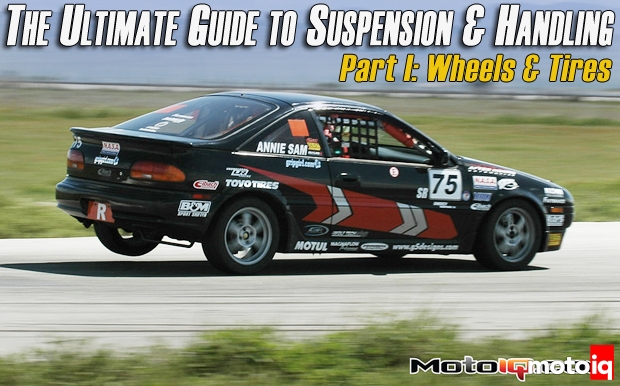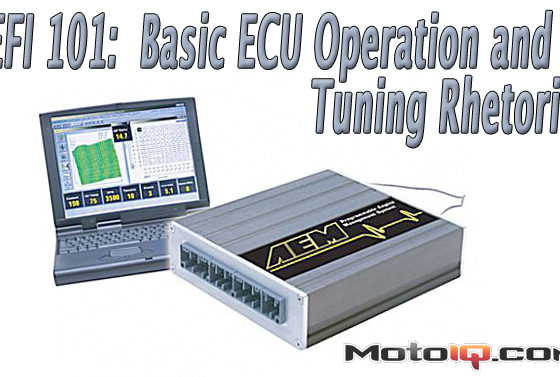,

Get Lightweight Wheels
The obvious way to make up for the disadvantages of increased wheel diameter and width is to use a light wheel. Light wheels are easier to accelerate and brake. They also reduce unsprung weight. Ever wonder why so many MotoIQ project cars run Volk wheels? Most Volks are forged. The forging process improves the grain structure and work hardens the metal (engineering terms for making it stronger!) It provides a superior strength-to-weight ratio. We like Enkei’s competition series wheels as well which have MAT formed rim sections. MAT helps improve the metal's mechanical properties much like forging for a fraction of the cost. Lower cost wheels are usually cast. The casting is a cheapest way to make wheels and nearly all low-priced wheels are cast aluminum.

The wheels listed below run the gamut of price point and quality but are all decent wheels with good weight.

Light wheels / low price |
Enkei Racing Series wheels |
5Ziggen FN01R-C, Pro Racer |
Rays Gram Light C series |
Team Dynamics Procomp |
Team Dynamics Prorace |
Kosei K1 |
Work Emotion, XSA |
Axis Reverb |
OZ Racing Series |

Very light wheels / price not considered |
Volk one-piece forged |
SSR forged |
Rays Gram Light F series |
Work Meister |
BBS RC |
In the next edition of MotoIQ's Ultimate guide to suspension and handling we will get into the 2nd step to making your car handle well–body roll, dive and squat reduction.




11 comments
Hi.. This is a very informative article. Thanks for writing it. I am a student trying to learn about vehicle dynamics. I have a doubt in this article… When the example of the monster truck is given regarding the weight of the unsprung mass, the statement “For the suspension to work well, the ratio of sprung to unsprung weight must be kept as low as possible” seems contradictory. Is this a mistake or have I misunderstood it?
If the tire’s weight is high, the suspension doesn’t work well.
Ok.. Thanks
Thank you so much Mike,
For sharing those precious informations. I’m a racer and I’m actually setting up a Nissan Sentra B13 that’s powered by an SR20VE with N1 cams coupled to an SR16VE transmission. I’m debating on using 17″ wheels with 225/50/17 or 15″wheels with 205/50/15.
The track is 2.3km long with lots of in field sections and only 2 straight lines basically, one of 250 meters and the other one is 400 meters.
I’m racing against a bunch of Honda civics with B20 engines.
Now, with the 17″ setup, the car will sit higher to the ground compared to the 15″, but the tires are wider. The shorter gearing ratio with the 15″ should be a plus for acceleration, but the extra grip of the 17″ from my understanding should be better for braking and turning. The 15″ are lighter so less unsprung weight.
Sorry for the long and detailed post but I really need your input.
Thank you.
Since there are no optional gear ratios for the Nissan transmission, it’s 15″ wheels unless you are running slicks and need more brake. Your track might not be too hard on brakes.
Thanks Mike,
we are using street tires for the class I’m racing. So you don’t think that the extra grip provided by the wider 225/50/17 tires would make a big difference when braking and turning on that track compared to the 205/50/15?
Why don’t you run wider 15″s?
The class doesn’t allow wider 15″s.
Well that sucks.
Hi Mike, I am a student, I am curious to know if there is an ideal sprung to unsprung mass ratio that works well.
You want the unsprung weight to be as low as posible.